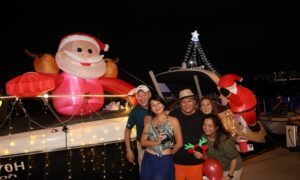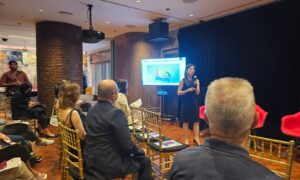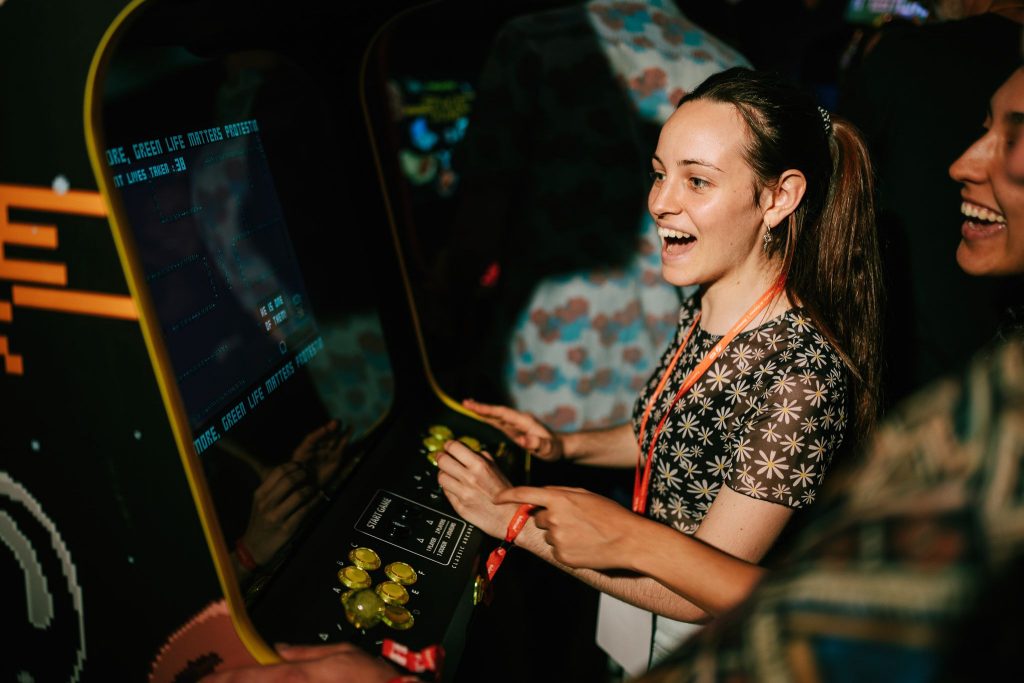
Poland’s B61 Institute and Science Centre Singapore, in collaboration with Poland’s Ministry of Foreign Affairs, are presenting the “Copernican Principle” exhibition — a three-month showcase merging art, science and interactive media in an innovative way.
Curated by Jan Swierkowski, this art and science project offers a unique blend of retro-futuristic games developed in collaboration with Tomasz Wlazlak, inviting visitors to explore deep reflections on technology’s future and humanity’s place in the cosmos.
Singapore, one of the world’s most advanced cities, is the perfect location for this exhibition, which raises fundamental questions about the future of mankind.
The “Copernican Principle” refers to the philosophical notion that Earth holds no special place in the universe — it is just one of countless planets that could harbour life.
To inspire deeper thought on this idea, the B61 Institute has created nine retro-futuristic games, each serving as a unique artistic project.
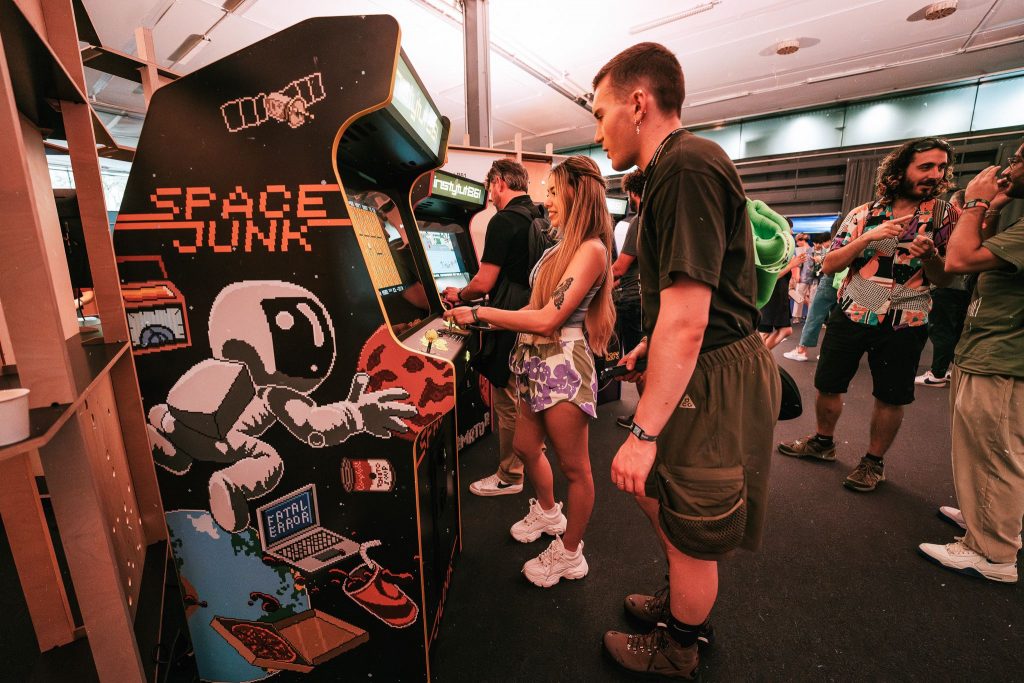
Players face quirky challenges, such as “concreting” virgin planets or quelling peaceful protests from friendly aliens in remote corners of the galaxy.
The project, developed with renowned visual artist Tomasz Wlazlak, seamlessly fuses retro aesthetics, gaming and philosophy, offering not only entertainment but also a multidimensional space for reflection.
It is an installation which is inspired by the Polish astronomer Nicolaus Copernicus (19 February 1473 – 24 May 1543), a Renaissance polymath, mathematician, astronomer and Catholic canon, who formulated a model of the universe that placed the Sun rather than Earth at its centre.
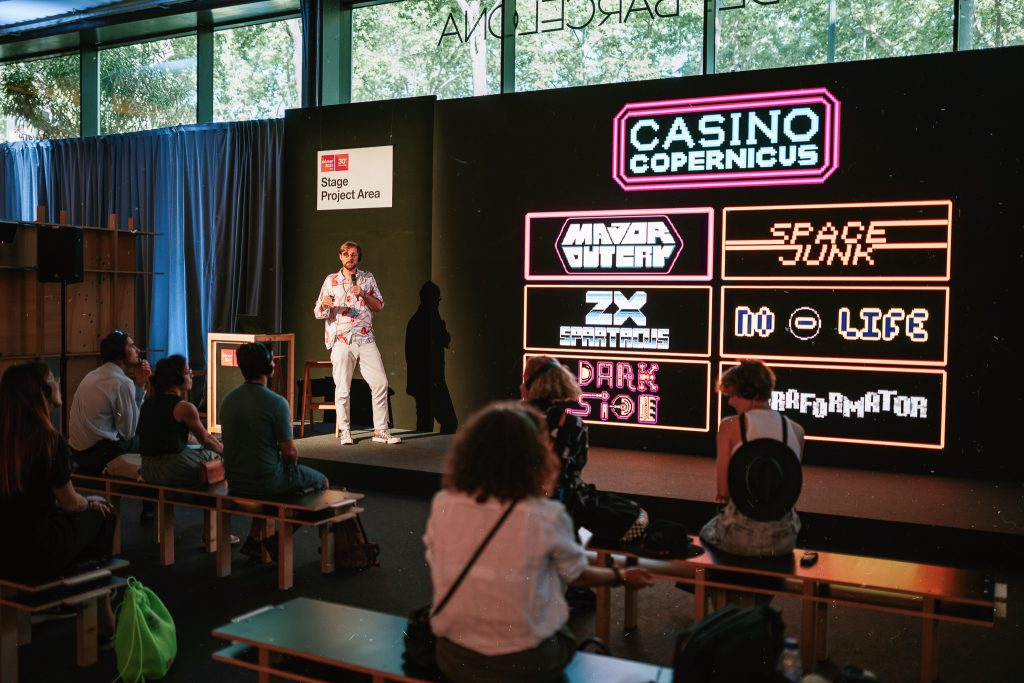
Copernicus set the heavenly bodies in rotation around the Sun, and introduced Earth’s daily rotation on its axis.
“And with this discovery, Copernicus challenged the paradigms that were prevalent at that time,” said Swierkowski (above), the exhibition’s creator. “And because of this, in cosmology, we have a certain rule, which is called Copernican principle, and that rule states that no point in the universe is anyhow chosen or is special.
“And because of this, we have created nine games which reflect the ideas that, again, the Earth is not the centre of everything. By this, we are addressing some ecological issues connected to space exploration.
“I’ve always aimed to talk about the universe in a way that’s both insightful and fun. I remember laughing out loud while reading (Polish writer Stanslaw) Lem’s works about aliens who couldn’t understand why humans feel sad thinking about their eventual non-existence, but not equally sad about the fact that they never existed before. These philosophical paradoxes and cosmic thought experiments inspired our exhibition, and Lem’s dualism gave birth to the game No-Life.”
The scenarios of the nine games cleverly reference contemporary philosophical and ethical issues related to technological progress. For example, Dark Side tasks visitors with establishing a nature reserve on the Moon, confronting them with the responsibility for future space colonies.
In ZX Spartacus, players lead a revolution of sentient machines, provoking thought on the nature of artificial intelligence and its ethical implications.
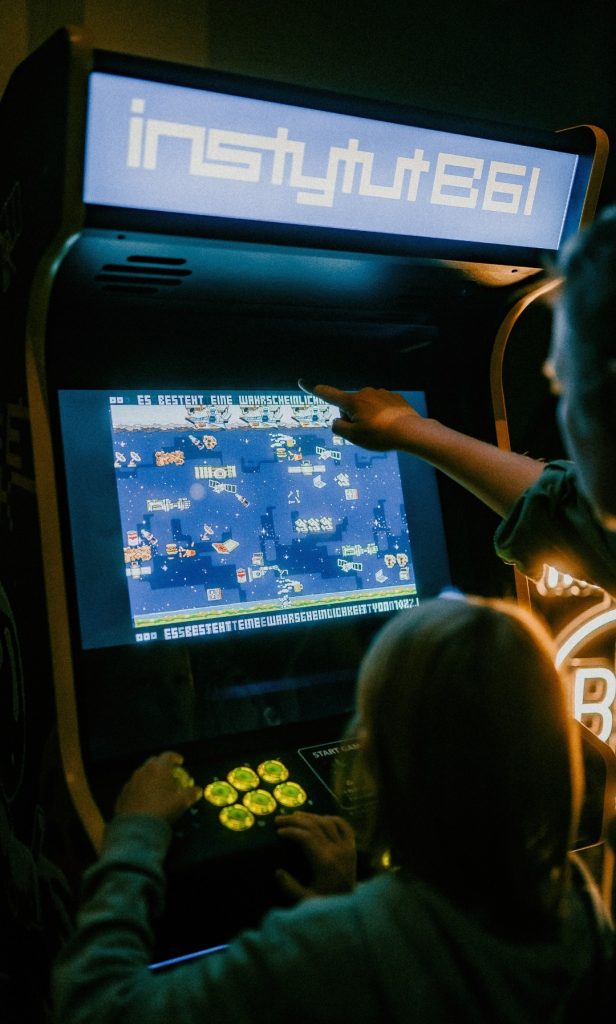 Space Junk challenges players to navigate a debris-filled orbit, mirroring the real-world issue of space pollution.
Space Junk challenges players to navigate a debris-filled orbit, mirroring the real-world issue of space pollution.
Swierkowski explained: “Today’s space junk is like the first bottles thrown into the ocean by sailors 500 years ago. Back then, the ocean seemed infinite, just as space does now, but we are now seeing how our actions have devastated the oceans. A similar cognitive error makes us litter space, ignoring the future consequences we will face.
“We went to outer space some 60 years ago and since then we have sent thousands of satellites, which have created a lot of space junk. So, in one of the games, visitors can become an astronaut who is trying to get back into his spaceship by evading the junk that surrounds it.
“It is a multiplayer game in which, in order to win, you have to get back to your spaceship. However, it becomes harder and harder because of the amount of things that we are putting around our Earth. In this way, it’s quite interactive and dedicated to learning through experience.
“We are not learning about the exact numbers of trash in space, but we are trying to understand the concept of putting things outside Earth that may become trash.”
The games can address certain topics about the way humans interact with space or reflect some philosophical ideas. For example, the Game No Life addresses people’s notion about howthey perceive life in space.
“Humans, at times, tend to think that life is something very natural, and they are very afraid of death,” said Swierkowski. “However, there is a famous book by Lem in which he explains that it’s very strange that we are so afraid of death, but we are not afraid that we have not existed when the universe was created 13 billion years ago.
“The universe is very different than what happens on Earth. We tend to think that life is the natural state of matter, and in this game, we explain this idea that actually there is, on the one hand, no life across the universe. But when it arises, as here on Earth, it’s something very special and very different.
“It’s a way of creating a certain morale and ethics for which arises from science. It doesn’t have to start with religion or culture. Science can be a great source of ethics and understanding.”
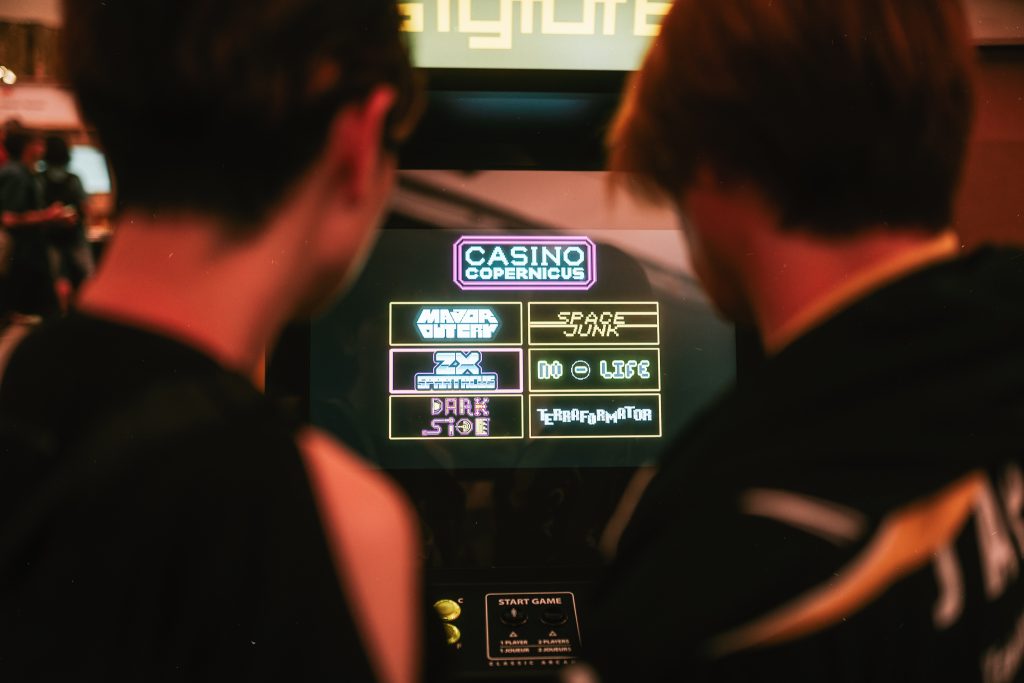
The games are targeted at two age groups. One is for youngsters, because the games are very easy to interact with and play.
“When you play with a friend, there is a lot of great interaction,” said Swierkowski. “It takes people away from their mobile phones.
“Making a physical structure for the games is great for youngsters. But, since it’s a retro design of the 80s and the 90s, it also appeals to older generations, like parents, because a lot of the time they go for the design, for the nostalgia and the arcade style.
“Some content is for people who can interact on a different level and understand the meaning behind the games, not only the gameplay.”
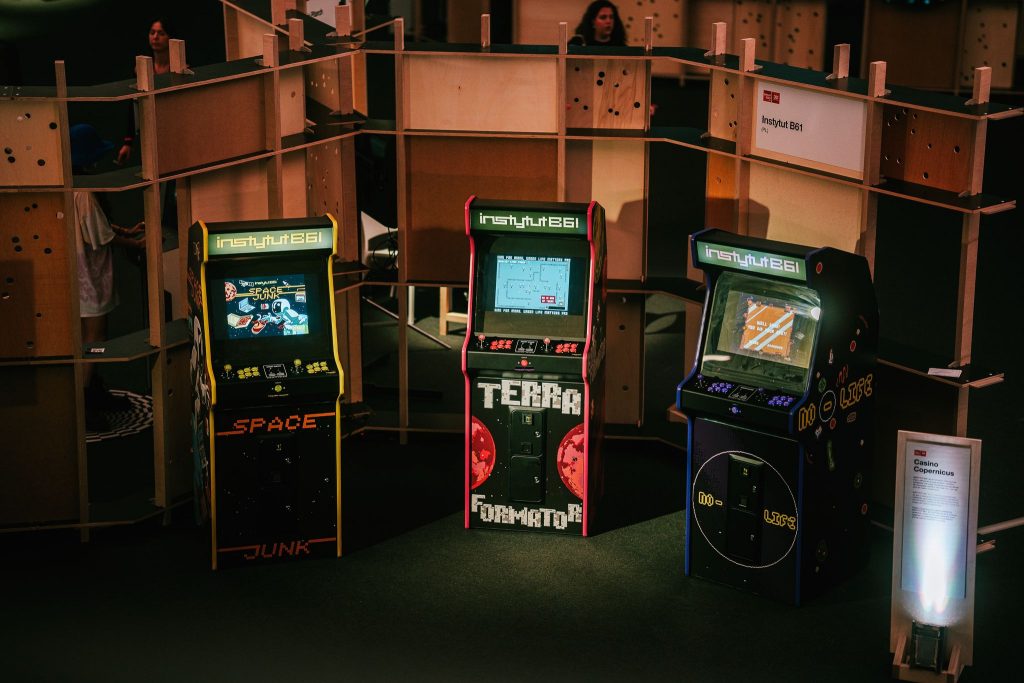 According to Swierkowski, through playing this type of games, the children learn that the our perspective on Earth is very local.
According to Swierkowski, through playing this type of games, the children learn that the our perspective on Earth is very local.
“It’s a way of opening a new perspective on seeing things that they are accustomed to, as most of the time they don’t even think that there could be a different point of view to the way,” he said. “So, the whole goal of the games is to change the perspective a bit and introduce some questions. Sometimes it’s not about getting direct answers. It’s more about questioning what you already know.
The installation took almost two years to develop. It connects art and science and go beyond what children can learn in school.
“It’s a different type of education which gives a certain sense and meaning to why they are going to school,” said Swierkowski. “The way this exhibition works, it allows them to find exact meanings and relate to scientific issues on a different level.
“They will understand issues like: Why are we going to space? Why are we doing this space research? Why are we investing taxpayers’ money to fund science?
“People have to understand the greater idea behind science, not only the usefulness of science. And I think this will be one of the major challenges for science communication in the future, to make ordinary people understand what science is about and why scientists are doing what they are doing.”
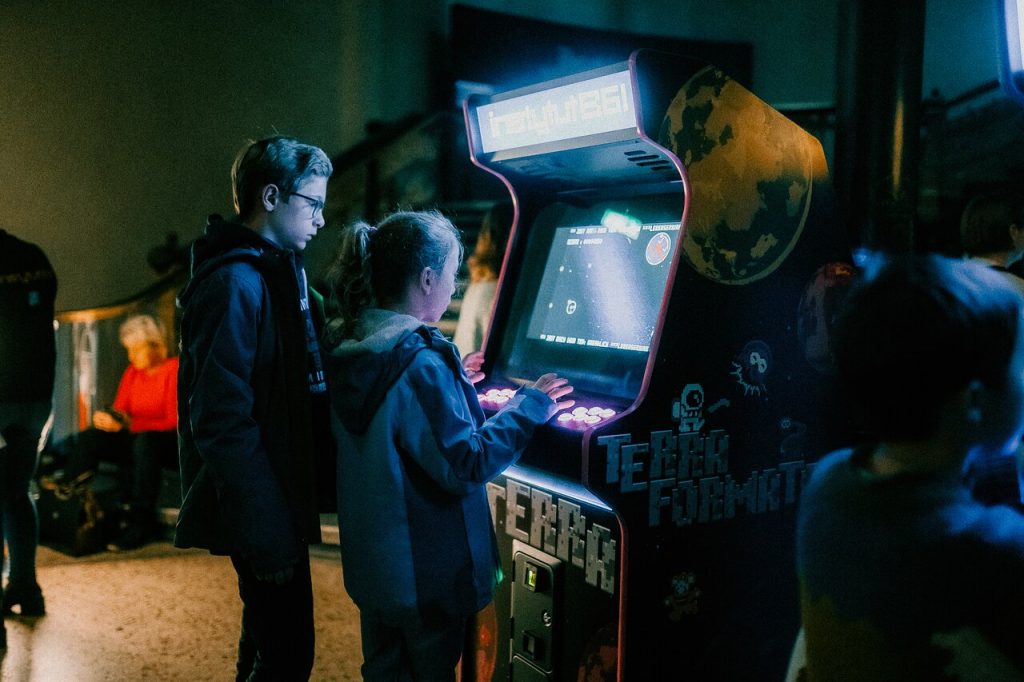
The “Copernican Principle” exhibition is the culmination of a project that has already been featured at prestigious events like Sonar in Barcelona, Berlin Science Week, the Madrid Planetarium, the Kochi Biennale and the European Capital of Science in Leiden.
Now, at Science Centre in Singapore, visitors will have three months to experience this one-of-a-kind blend of art, science and philosophy, appealing to both gaming enthusiasts and those seeking deeper reflections on humanity’s future.
After the exhibition’s launch, the games will also be available online, allowing people from around the globe the chance to experience this vision of the future.
As Tomasz Wlazlak emphasized: “Arcade games are the perfect way to engage with questions about humanity’s future and our place in the universe — in a way that is both accessible and immersive.”
Singapore, a global symbol of innovation and technological advancement, is the ideal setting for such a futuristic exhibition. The exhibition addresses issues that may seem far off but are unfolding right here and now.
“This is a city of the future, where technology meets vision. Our games aren’t just entertainment, they are tools designed to make us think about the values we’ll take with us on our journey to the stars. The retro style allows us to talk about very serious matters in a lighthearted way,” said Swierkowski.
Singapore will not be the last stop in Asia for the B61 Institute’s games. In December, the exhibition will continue its journey to Panjim, India, as part of the Serendipity festival.
Exhibition: “The Copernican Principle”
Opening Dates: September 27, 2024 – December 31, 2024
Location: Science Centre Singapore, Singapore
Organisers: Instytut B61, Ministry of Foreign Affairs of the Republic of Poland, Science Centre Singapore
Partners: Kujawsko-Pomorskie Region, Embassy of the Republic of Poland in Singapore
Artists: Jan Swierkowski, Tomasz Wlazlak
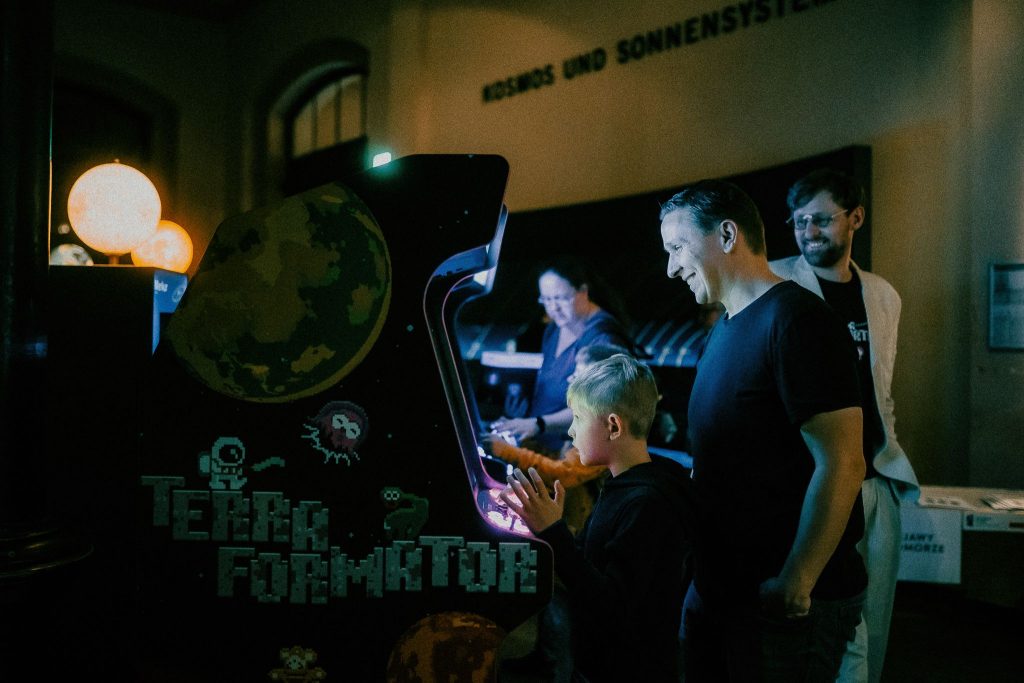
B61 Institute
It is an international collective of artists and scientists that merges art and science into innovative projects. Founded by Dr Jan Swierkowski, the B61 Institute has delivered art-science events worldwide, engaging audiences in unique interdisciplinary experiences.
Swierkowski is a curator and artist specialising in the fusion of art and science (art & science). His works have been showcased both in Poland and internationally, including at the Kochi-Muziris Biennale 2023.
He served as the curator of the Understanding the Universe exhibition at EXPO Dubai 2020. In 2017, he was awarded the Ministry of Science and Higher Education Prize for the Popularisation of Science in Poland. He is also a recipient of a scholarship from the Portuguese government’s FCT programme for scientists.
Dr Tomasz Wlaslak is a visual artist and academic lecturer at the Department of Intermedia in the Faculty of Fine Arts in Torun, where he completed his PhD in new media. His works have been featured at numerous international festivals both in Poland and abroad.
Science Centre Singapore
Science Centre Singapore, a non-formal educational institution and leading regional Science Centre, along with its group of attractions, brings out the wonders of science, technology, engineering and mathematics through its unique blend of exhibitions, educational programmes and events.
A custodian of creativity and innovation, Science Centre Singapore has captured the evolution of scientific developments for more than four decades. The Centre and its partners have played a pivotal role in transforming the way students and the public interact with and learn about science, technology, engineering and mathematics.
Since 1977, the Centre has welcomed over 30 million visitors and inspired them with more than 1,000 exhibits spread across 14 exhibition galleries and outdoor exhibition spaces.
The Centre’s group of attractions include Omni-Theatre, Snow City and KidsSTOPTM?.
The Omni-Theatre, Southeast Asia’s first 8K 3D digital theatre with a 23m wide seamless dome screen, is an immersive destination like no other.
Snow City is Singapore’s only permanent indoor snow centre offering an Arctic inspired experience at Singapore’s first ice gallery and snow chamber.
KidsSTOPTM is where every child gets to Imagine, Experience, Discover and Dream. It is Singapore’s first children’s science centre offering an enriching experience through purposeful play for children aged 18 months to 8 years old.
For more information, please visit www.science.edu.sg

